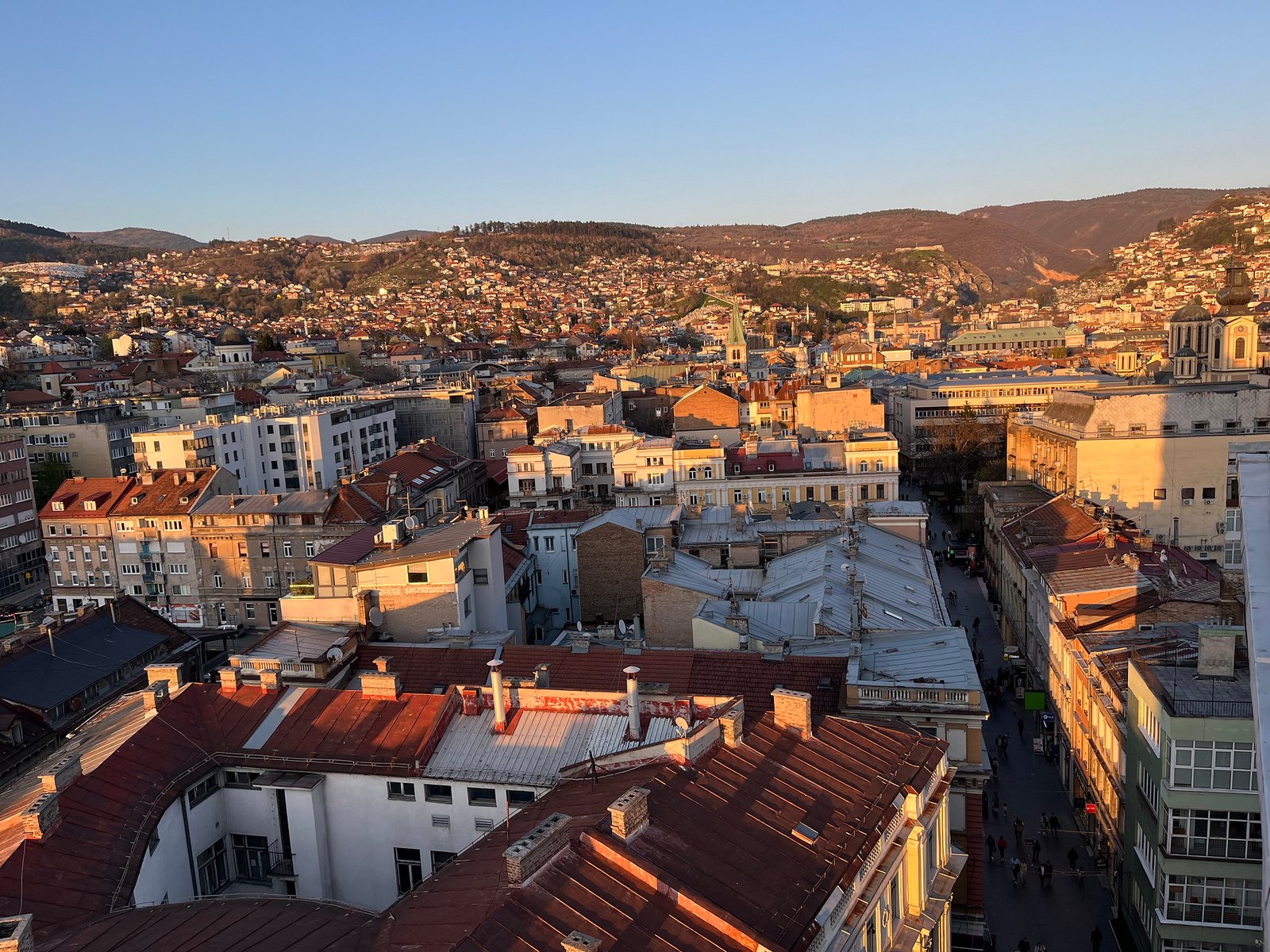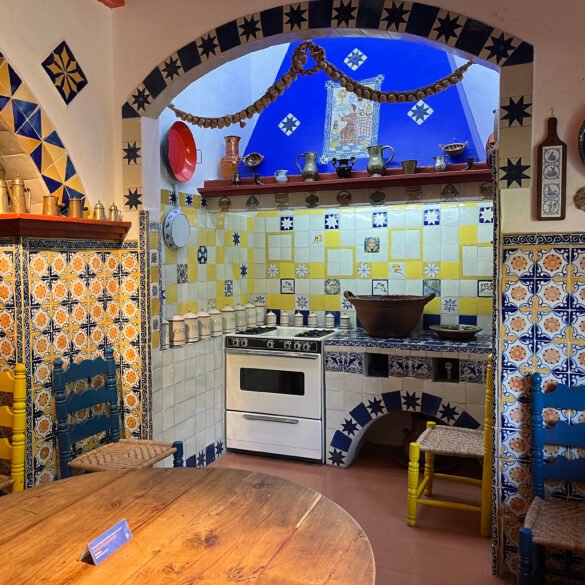What is a country?
It’s a strange question, especially from someone who has traveled extensively. But the answer is not quite as simple as a glance at a political map might suggest. We have been to countries that no longer exist (Czechoslovakia, Yugoslavia, USSR), regions that used to be countries (Scotland, Wales, Brittany), and others that dream of statehood (the Basque Country, Catalonia, and Kurdistan). And now we’ve come to a place with a double name and a fractured identity: one country, but three nations. A land where flags of other countries fly freely over towns and villages. A country stitched together after a brutal, genocidal war, where just 30 years ago neighbors turned on neighbors for no other reason than their ethnicity. It’s the only country in the world with three official languages, three rotating presidents, and almost no shared sense of national identity.
“Where are you off to?” a neighbor asked, seeing our packed backpacks.
“Bosnia and Herzegovina!” I said, and seeing a blank stare, tried to help, “It used to be in Yugoslavia.”
“And… where is it now?”
Where it has always been and where it was, paradoxically, just recently created 30 years ago: in the heart of the Balkans, among mountains and rivers, dense forests and green valleys, shaped by both Ottoman and Austro-Hungarian rule. Partially surrounded by Croatia on one side, its borders contested by Serbia on the other, Bosnia and Herzegovina is not hard to find on a map. Well, at least for now.

But will it still be on the map 30 years from now? No one knows and not many people we met were optimistic.
Ethnic Croats, who take up 16% of the population, see Croatia as their homeland both culturally and politically. Croatia looks back at them with the same fondness, offering dual citizenship, and many Bosnian Croats hold Croatian passports, which grant them access to the EU labor market, healthcare, and education.
Serbs (around 33% of the population) primarily live in Republika Srpska, an entity within Bosnia and Herzegovina that has its own president, parliament, police force, flag, and language. Their relationship with the Bosnian state is complex and often ambivalent, while they maintain close cultural and political ties to neighboring Serbia, which also grants them dual citizenship and quietly encourages nationalistic sentiment.
Caught in the middle are Bosniaks, the only people in the country who have no other home. Predominantly Muslim, unlike Russian Orthodox Serbs and Catholic Croats, they are ethnically South Slavic and are native to the region. Their Islamic roots are not influenced by Arab neighbors but are traced back to the Ottoman Empire. They have their own distinct Muslim identity, which is culturally European, often secular, and deeply Balkan. Bosniaks make up nearly 50% of the population and appear to be the only group truly invested in keeping the country together.
We started our trip in Mostar, a city that is literally divided between Croatians and Bosniaks by a river running through the center of town.
“Soon, things will get bad, I think. There won’t be peace for much longer!” said our Airbnb host as we were checking in.
“In the next four days?” I asked, my brain fogged by jet lag. In an attempt to make small talk during check-in, I had regretfully asked, “How are things here?”
“Oh no! You enjoy Mostar! But in the next 10-20 years for sure. God willing, I won’t live to see it.”
I stared at our host, unsure what to say. He was a tall, middle-aged man with graying hair. He told us he was a Bosniak and had survived the war right in the house he now rents to tourists. Besides that self-identification, there was no way to know as he looked Slavic, and neither he nor his house displayed any religious or cultural markers.
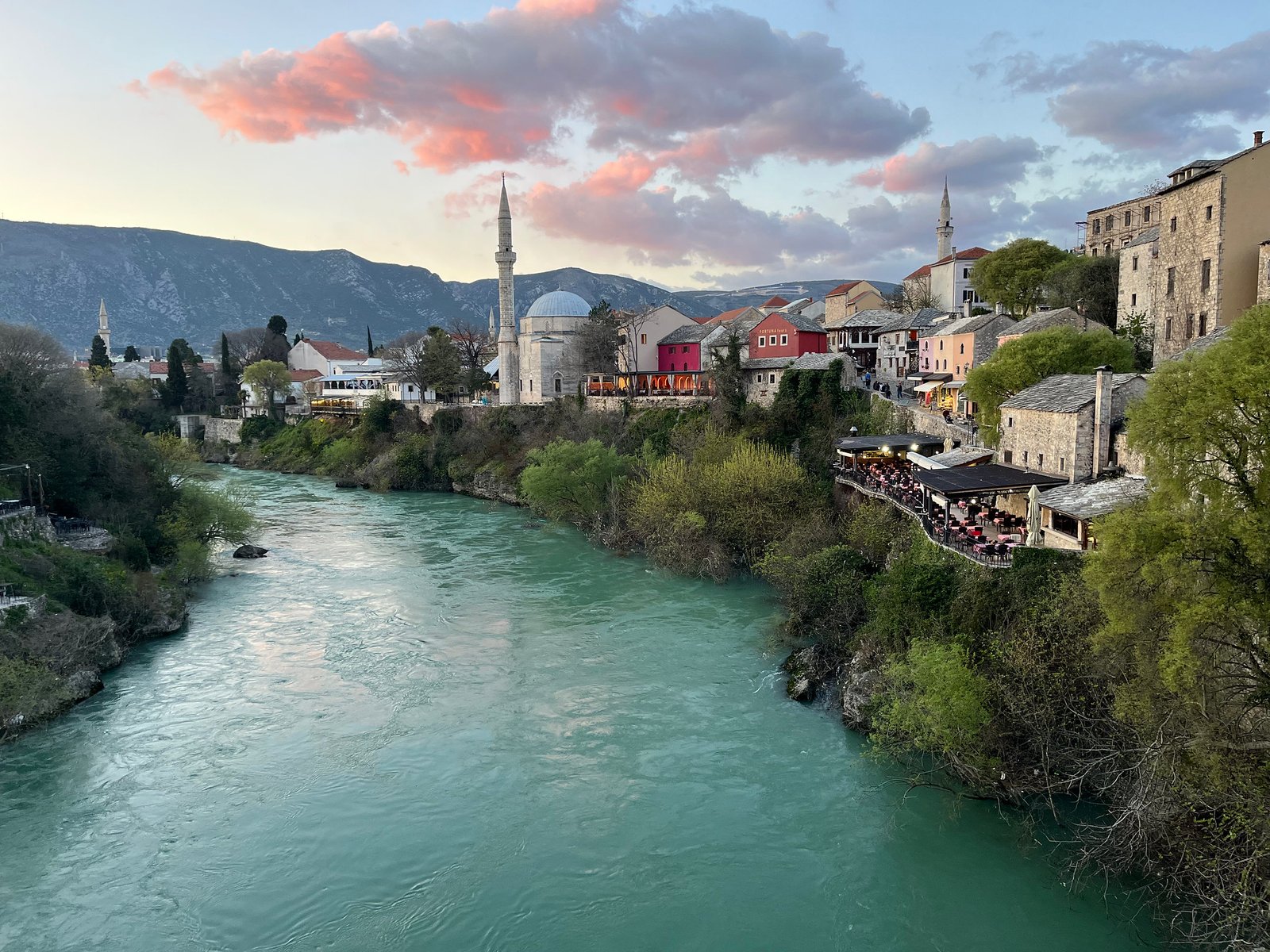
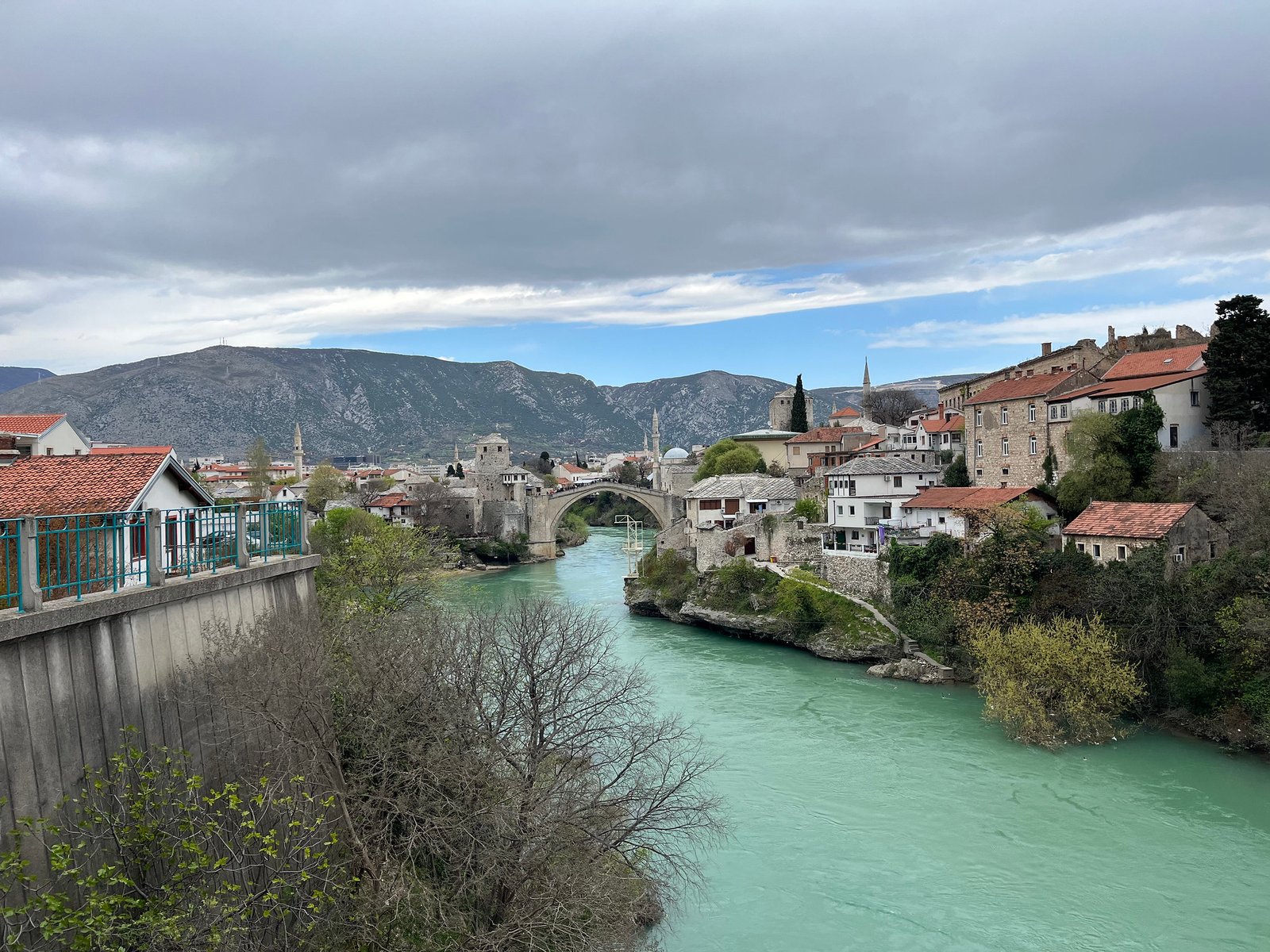
The next day, we were being walked about town by another Bosniak named Sheva, our city tour guide. As we passed a pub with local men watching a soccer match, he casually remarked that Croatians in Mostar always cheer against the national Bosnian team.
“When they play against Croatia?” someone tried to clarify.
“No. Just in general.”
It was the sort of remark I would normally mull over for hours. But moments later, Sheva pulled a piece of shrapnel from his jacket, the remnants of a mortar shell that crashed through the roof of his house when he was fourteen, missing him by mere centimeters.
At the end of the tour, when it was time to ask questions, I couldn’t put a single thought together.
Later, we visited the Kajtaz House, a preserved Ottoman residence turned national monument. Our guide was a young Bosniak woman, born after the war, yet deeply aware of the political fragility surrounding her. She told us that to balance out this ethnically divided country, there is a special political system in place, created by the Dayton Peace Agreement of 1995. Rather than having a single president, the country has a three-member Presidency, with one representative from each group: Bosniak, Serb, and Croat. They serve four-year terms and rotate the chairmanship every eight months.
“Every four years when the elections come around, I pack my bags.” She said somberly. “God knows where I would go. I have no other home but here. But sometimes the rhetoric gets so scary, I think another war will break out.”
She didn’t hide her envy of Croats with EU passports who could study and work abroad. She loved her country, was proud of her heritage, but also painfully aware that one day she might have to leave it behind.

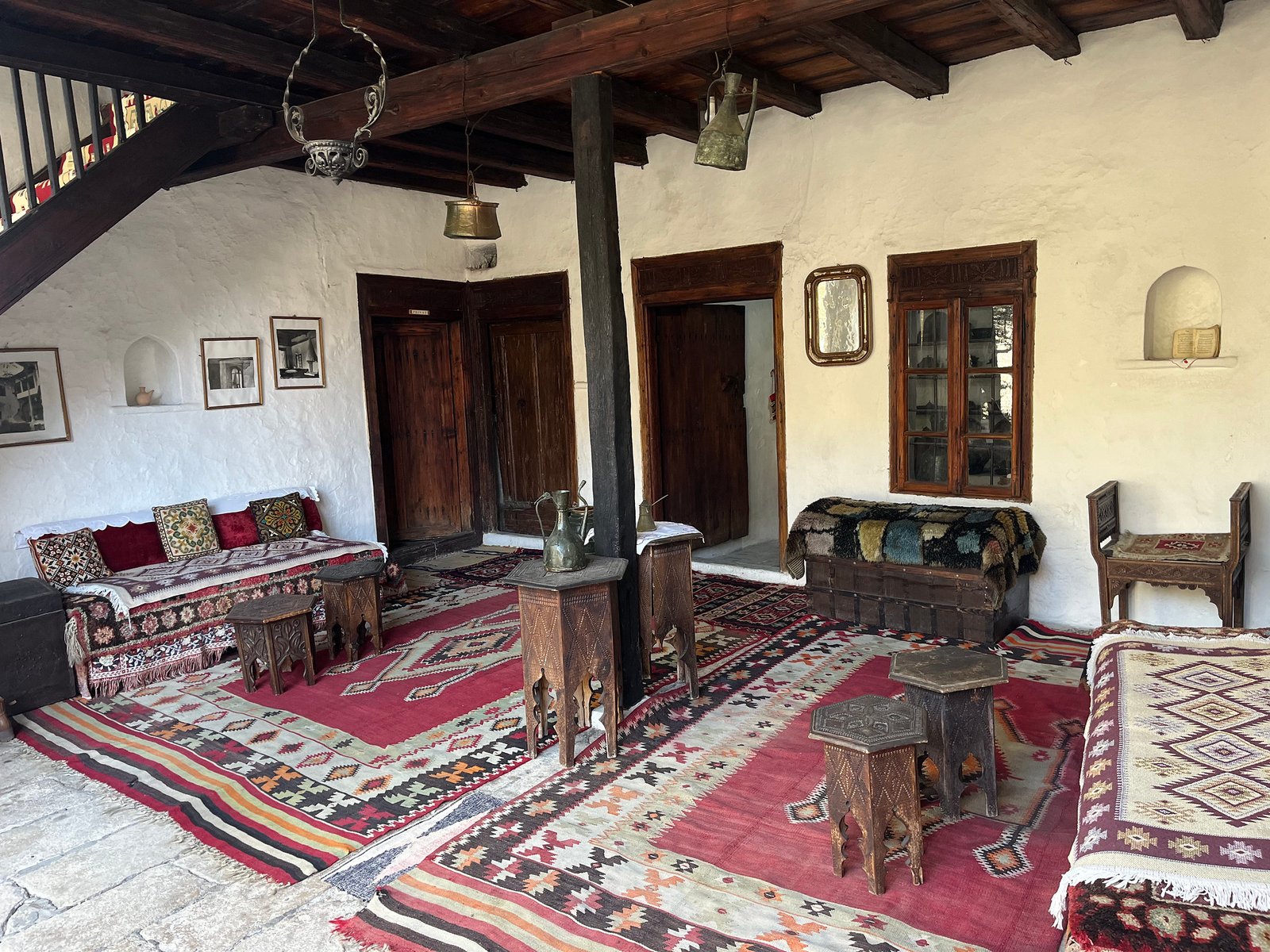
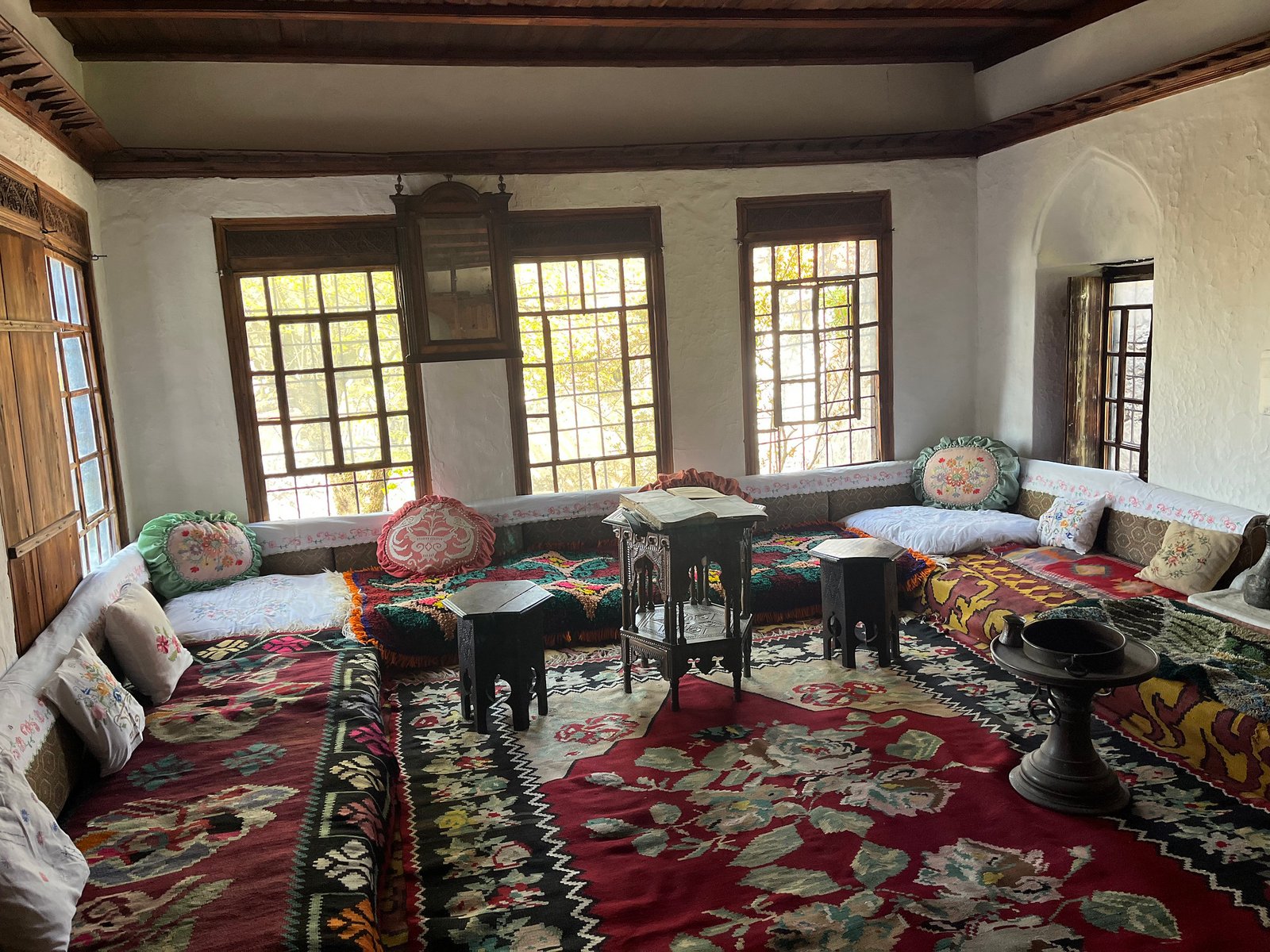
In Sarajevo, we finally met an ethnic Serb, our Airbnb host. He was cheerful, tall, grey-haired, and, oddly enough, looked much like our Bosniak host in Mostar. When Victor mentioned he was originally from Belarus, our host beamed: “Of course! We are all Slovakian here!”
“Slavic…” Victor mumbled, but the man just happily nodded along. In just a few minutes, it became clear that despite speaking different languages and being from different countries, Victor was considered ideologically closer to our host by virtue of being Slavic than a Croat born in the same town.
A few days later, as the sun dipped below Sarajevo’s hills, we sat on a rooftop café sipping strong Bosnian coffee and enjoying a pastry. At the next table were four girls, young and fresh-faced, three in hijabs and one in a short skirt and a silver crucifix. They laughed, chatted, sipped coffee, and took selfies with and without duckface.
Our trip was almost coming to an end, and for the first time, for a moment, I felt something resembling hope. Hope that maybe this new generation, born after the war but not untouched by it, could overcome the layers of trauma, hatred, and division. That maybe, just maybe, Bosnia and Herzegovina will remain, and not just on maps, but in the hearts of its own people.
